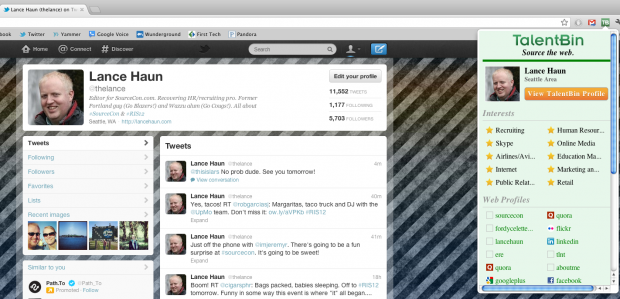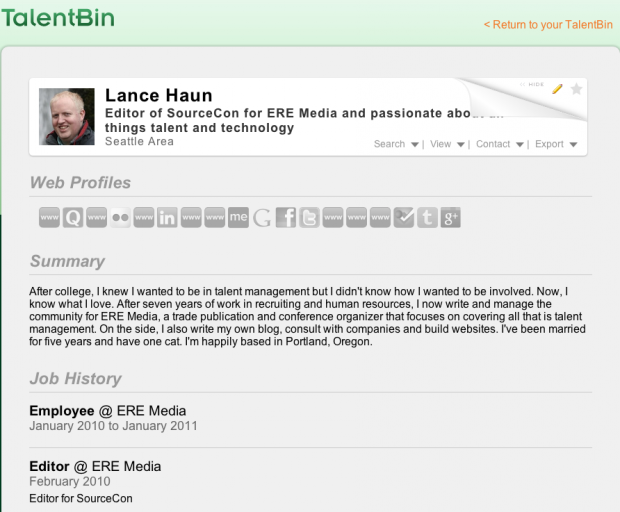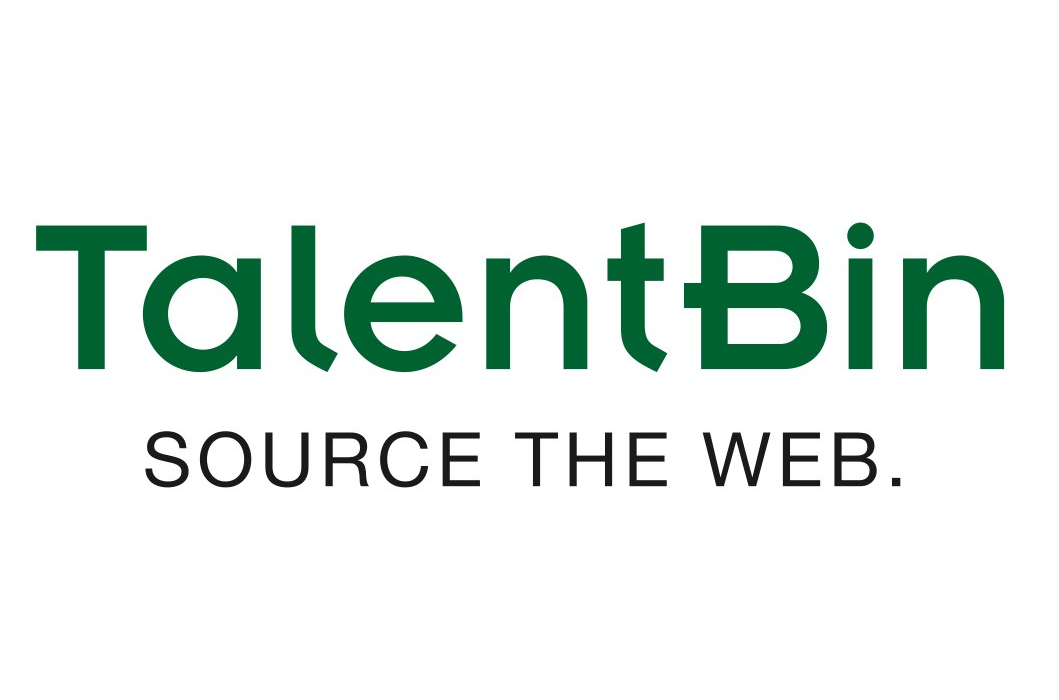TalentBin officially launched from private beta to public yesterday. The service, which bills itself as a talent search engine, announced via press release that it “just turned the entire professional web into the largest talent sourcing database known to mankind with its public launch.”
If you’ll excuse the bravado, what TalentBin is trying to do is actually quite impressive and has leaped forward since I saw the beginnings of their private beta at the HR Technology Conference last October.
What they are trying to do is fairly simple: create a searchable database that merges information about a person from all over the web into a single profile so that sourcers can get all of the information about them in one, digestible place.
Pre-launch reviews were strong
When TalentBin quietly went into private beta, several prominent folks got an opportunity to use the product hands-on. And the reviews from those people were strong.
Megan Hopkins wrote here on SourceCon a few months ago that, “in the four months I’ve been using TalentBin, I’ve located, extended offers to, and hired nearly a half-dozen candidates (all top notch engineering and design professionals) and my pipeline is robust with killer talent that will, at some point, be looking for a new company to join.” She adds, “In terms of time, it took me a fraction of the time it used to take me, allowing me to be so much more efficient and contribute more to my employer. And, it saved us money — the ultimate ROI.”
Irina Shamaeva wrote on her Boolean String blog last November, “TalentBin is one example of a sourcing product that has a potential to become the Dream Software.” She concluded, “if you have a sourcing budget, I do recommend checking TalentBin out.”
Also in the press release is a customer list that includes companies like Groupon, Intuit and Yahoo.
Profiles built based on implicit data from 30+ sources
In talking with TalentBin co-founder Peter Kazanjy, he said that TalentBin has expanded its reach since its beta launch last year. “We’re now using over 30+ sources from the open web,” said Kazanjy yesterday by phone. “We’re going whole hog on creating an implicit database of potential candidates.”
Kazanjy explained that the implicit database they are building is better than competing search tools by LinkedIn or job boards because it takes in information people are creating elsewhere. He used the example of software engineers who may have a terrible LinkedIn profile and no (or a severely outdated) resume on a job board but have been active on Twitter or Quora or even specialty sites like GitHub or Stack Overflow. They use contextual clues from what the person tweets or works on based on less traditional sources of data and compile it all into a single profile.
Like LinkedIn, the bigger your network, the better your reach will be. That’s why TalentBin focuses very heavily on having your co-workers connect to your TalentBin so you can search resumes from their networks.
Added Chrome plugin and API access
One of the things that launched with their move from private beta to public was the addition of a Google Chrome plugin that allows you to have easy access to the consolidated profiles TalentBin offers when you’re cruising social networks. As an example, if you bring up my Twitter profile and click on the TalentBin plugin, you’ll get this:

That has a link to all of my social profiles as well as my contributions on websites like SourceCon and ERE. And even with a basic account, you can find a lot of information about me (and potential ways of getting in touch as well).

Kazanjy also said his company also added API access to the platform for the public release. “One of the things we heard from our [beta] customers is that they would love it if this could be integrated into their ATS,” he said. “This is a first step.”
The product itself still has some rough edges. Most of my tech contacts are admittedly based in the Northwest and while I wouldn’t call it a representative sample, TalentBin didn’t have some of these people in their system. As Kazanjy said, “If you’re looking for someone in Iowa, you’re probably not going to find a lot right now.” Indeed, it seems the further away you are from a technical background (or from Silicon Valley), the less chance there is that a profile will be in the system. He claims they are continuing to expand the number of profiles but they started with technical talent since that’s where the greatest need is at right now.
Pricing is on a sort of seats-based, freemium model. Kazanjy said they are debuting with a $4,800 per seat/per year price point for the full version of their product. He said that’s about half of what LinkedIn Recruiter costs.
